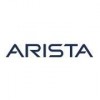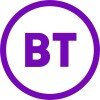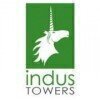Filter interviews by
Vindhya Telelinks Project Engineer Interview Questions and Answers
12 Interview questions
1m3 of concrete typically requires about 300-400 kg of cement, depending on the mix design and application.
Standard concrete mix uses approximately 300 kg of cement per cubic meter.
For high-strength concrete, up to 400 kg of cement may be used.
The water-cement ratio affects the amount of cement needed; lower ratios require more cement.
Example: A typical mix for structural applications might be 1:2:4 (cement:sand:a...
The amount of cement needed for plastering 1 sqm varies based on mix ratio and thickness.
Standard plaster mix ratio is 1:4 (cement:sand).
For 1 sqm at 12mm thickness, approximately 8-10 kg of cement is needed.
Higher thickness or different mix ratios will increase cement requirement.
Example: For a 1:6 mix, you may need around 6-8 kg of cement per sqm.
HDD machine is a drilling machine used for horizontal directional drilling.
HDD stands for Horizontal Directional Drilling
It is used for underground drilling without disturbing the surface
It is commonly used for laying pipelines, cables, and conduits
The machine uses a drill stem and a drilling fluid to bore through the ground
It requires skilled operators and engineers to operate and plan the drilling process
Discharge rods are grounding devices used to discharge static electricity from equipment or machinery.
Also known as grounding rods or earthing rods
Typically made of copper or aluminum
Used in industries such as oil and gas, chemical, and manufacturing
Prevents damage to equipment and potential safety hazards
Example: Discharge rods are commonly used in refineries to prevent explosions caused by static electricity bui...
A lightning arrestor is a device used to protect electrical equipment from lightning strikes.
It is also known as a surge arrester or lightning diverter.
It works by providing a low-impedance path for lightning current to flow to the ground.
It is commonly used in power distribution systems, telecommunication networks, and buildings.
Examples include metal oxide varistors, gas discharge tubes, and carbon block arresto...
Jointing of cables and conductors is a crucial aspect of project engineering.
Jointing involves connecting two or more cables or conductors to ensure continuity of electrical flow.
Various methods of jointing include crimping, soldering, and welding.
Factors such as the type of cable, voltage, and current capacity must be considered when selecting a jointing method.
Proper insulation and sealing of joints is essential...
The size of conductors and cables is an important factor in determining their electrical properties and performance.
The size of a conductor is determined by its cross-sectional area, which affects its resistance and current-carrying capacity.
Cable size is determined by the current it needs to carry and the distance it needs to travel.
Larger conductors and cables can carry more current and have lower resistance, bu...
GTP is a protocol used in cellular communication. MQP and FQP are not commonly used acronyms.
GTP stands for GPRS Tunnelling Protocol
It is used in cellular communication to allow data transfer between different networks
MQP and FQP are not commonly used acronyms and may refer to specific organizations or products
The bill of material for a 1 KM AB cable line includes various components.
The cable itself
Insulators
Connectors
Poles or towers
Grounding equipment
Hardware such as bolts and clamps
Tools for installation
Safety equipment
Transportation costs
Labor costs
The bill of material for a 1 KM 11 KV line includes various components such as conductors, insulators, transformers, and poles.
Conductors: Copper or aluminum cables used to transmit electricity.
Insulators: Materials like porcelain or polymer used to support and isolate the conductors.
Transformers: Devices used to step up or step down the voltage.
Poles: Structures to support the conductors and maintain their positi...
Vindhya Telelinks Project Engineer Interview Experiences
2 interviews found
I applied via Naukri.com and was interviewed before Apr 2023. There was 1 interview round.
(2 Questions)
- Q1. 1m3 concrete use cement
- Ans.
1m3 of concrete typically requires about 300-400 kg of cement, depending on the mix design and application.
Standard concrete mix uses approximately 300 kg of cement per cubic meter.
For high-strength concrete, up to 400 kg of cement may be used.
The water-cement ratio affects the amount of cement needed; lower ratios require more cement.
Example: A typical mix for structural applications might be 1:2:4 (cement:sand:aggreg...
- Q2. 1sqm2 plaster use cement kg
- Ans.
The amount of cement needed for plastering 1 sqm varies based on mix ratio and thickness.
Standard plaster mix ratio is 1:4 (cement:sand).
For 1 sqm at 12mm thickness, approximately 8-10 kg of cement is needed.
Higher thickness or different mix ratios will increase cement requirement.
Example: For a 1:6 mix, you may need around 6-8 kg of cement per sqm.
Interview Questionnaire
23 Questions
- Q1. Bill of material of 1 KM 11 KV line
- Ans.
The bill of material for a 1 KM 11 KV line includes various components such as conductors, insulators, transformers, and poles.
Conductors: Copper or aluminum cables used to transmit electricity.
Insulators: Materials like porcelain or polymer used to support and isolate the conductors.
Transformers: Devices used to step up or step down the voltage.
Poles: Structures to support the conductors and maintain their position.
Ot...
- Q2. Bill of material of 1 KM AB cable line
- Ans.
The bill of material for a 1 KM AB cable line includes various components.
The cable itself
Insulators
Connectors
Poles or towers
Grounding equipment
Hardware such as bolts and clamps
Tools for installation
Safety equipment
Transportation costs
Labor costs
- Q3. Bill of material of 1KM underground line 33 KV ,11,KV,LT lines
- Ans.
The bill of material for a 1KM underground line with 33KV, 11KV, and LT lines.
The bill of material should include all necessary components for the underground line.
Components may include cables, transformers, switchgear, and other electrical equipment.
The quantity of each component should be specified in the bill of material.
The bill of material should also include any necessary accessories such as clamps, connectors, ...
- Q4. Testing commissioning of RMU ,relay setting
- Ans.
Testing and commissioning of RMU and relay setting is a crucial aspect of project engineering.
Testing and commissioning of RMU involves verifying the functionality of the switchgear and ensuring it is safe for operation.
Relay setting involves configuring the protection relays to ensure they operate correctly in the event of a fault.
Testing and commissioning should be carried out in accordance with relevant standards an...
- Q5. Transformer earthing
- Q6. What is lightning arrestor
- Ans.
A lightning arrestor is a device used to protect electrical equipment from lightning strikes.
It is also known as a surge arrester or lightning diverter.
It works by providing a low-impedance path for lightning current to flow to the ground.
It is commonly used in power distribution systems, telecommunication networks, and buildings.
Examples include metal oxide varistors, gas discharge tubes, and carbon block arrestors.
- Q7. Soil conductivity test
- Q8. Transformer testing
- Q9. ACSR conductor testing ABC testing Pannel testing Structure testing
- Q10. Earthing Earthing of transformer Earthing of lightning arrester Earthing of sub station Earthing of single pole Earthing of pannels
- Q11. What is discharge rods
- Ans.
Discharge rods are grounding devices used to discharge static electricity from equipment or machinery.
Also known as grounding rods or earthing rods
Typically made of copper or aluminum
Used in industries such as oil and gas, chemical, and manufacturing
Prevents damage to equipment and potential safety hazards
Example: Discharge rods are commonly used in refineries to prevent explosions caused by static electricity buildup.
- Q12. Size of conductors Size of cables
- Ans.
The size of conductors and cables is an important factor in determining their electrical properties and performance.
The size of a conductor is determined by its cross-sectional area, which affects its resistance and current-carrying capacity.
Cable size is determined by the current it needs to carry and the distance it needs to travel.
Larger conductors and cables can carry more current and have lower resistance, but may...
- Q13. What is GTP What is MQP What is FQP
- Ans.
GTP is a protocol used in cellular communication. MQP and FQP are not commonly used acronyms.
GTP stands for GPRS Tunnelling Protocol
It is used in cellular communication to allow data transfer between different networks
MQP and FQP are not commonly used acronyms and may refer to specific organizations or products
- Q14. Transformer oil testing
- Q15. Cable insulation testing Continuity testing High pot test
- Q16. What is HDD machine
- Ans.
HDD machine is a drilling machine used for horizontal directional drilling.
HDD stands for Horizontal Directional Drilling
It is used for underground drilling without disturbing the surface
It is commonly used for laying pipelines, cables, and conduits
The machine uses a drill stem and a drilling fluid to bore through the ground
It requires skilled operators and engineers to operate and plan the drilling process
- Q17. PSC pole STP pole RS joist pole Rail pole
- Q18. HDPE PIPE GI PIPE PLB duct
- Q19. Chemical earthing Electrical earthing
- Q20. Jointing of cables Jointing of conductors
- Ans.
Jointing of cables and conductors is a crucial aspect of project engineering.
Jointing involves connecting two or more cables or conductors to ensure continuity of electrical flow.
Various methods of jointing include crimping, soldering, and welding.
Factors such as the type of cable, voltage, and current capacity must be considered when selecting a jointing method.
Proper insulation and sealing of joints is essential to p...
- Q21. Tell me about yourself
- Ans.
Experienced project engineer with a background in civil engineering and a passion for problem-solving and team collaboration.
Bachelor's degree in Civil Engineering
5+ years of experience in project management
Proficient in AutoCAD and project management software
Strong communication and leadership skills
Successfully led a team in completing a major infrastructure project on time and within budget
- Q22. Previous company and project details
- Q23. Salary discussion
Skills evaluated in this interview
Top trending discussions






Interview questions from similar companies

Project Engineer Interview Questions & Answers
Sterlite Technologiesposted on 13 Apr 2021
I applied via Naukri.com and was interviewed before Apr 2020. There was 1 interview round.
Interview Questionnaire
1 Question
- Q1. Oprical fiber
Interview Preparation Tips

Senior Engineer Interview Questions & Answers
Arista Networksposted on 26 Apr 2025
I appeared for an interview before Apr 2024, where I was asked the following questions.
- Q1. Linked list CRUD operations
- Q2. Invert the bits
- Ans.
Inverting bits means flipping each bit in a binary representation from 0 to 1 and from 1 to 0.
Bitwise NOT Operator: In many programming languages, the bitwise NOT operator (~) can be used to invert bits. For example, ~5 (binary 0101) results in -6 (binary 1010).
Binary Representation: To invert bits, first convert a number to its binary form. For example, the binary of 6 is 110, and inverting it gives 001.
Example: Inver...

I applied via Walk-in and was interviewed in Mar 2023. There were 5 interview rounds.

(1 Question)
- Q1. Lte architecture and ip based questions
(1 Question)
- Q1. Lte architecture, ip based
(1 Question)
- Q1. Lte architecture and ip
(1 Question)
- Q1. What is region for job change and salary expectations

I applied via LinkedIn and was interviewed in Feb 2023. There were 3 interview rounds.

(3 Questions)
- Q1. Ask salary expectations
- Q2. Salary Discussion and relocation process
- Q3. Dacumentation and onbording
(2 Questions)
- Q1. Alarm troublesooting otn
- Ans.
Troubleshooting alarms in Optical Transport Networks (OTN) involves systematic diagnosis of issues affecting signal integrity.
Check alarm indicators on the OTN equipment to identify specific issues.
Verify physical connections and ensure all cables are securely connected.
Examine the configuration settings for any discrepancies or errors.
Use diagnostic tools to analyze signal quality and performance metrics.
Review logs f...
- Q2. OTN fundamental troubleshooting.
Interview Preparation Tips

I applied via Naukri.com and was interviewed in Aug 2023. There were 3 interview rounds.

(1 Question)
- Q1. Regarding working profile
(1 Question)
- Q1. Personal details
Interview Preparation Tips

(1 Question)
- Q1. Promises,async await,callback,api integration
(1 Question)
- Q1. Performance optimization,usecallback,let const var

I applied via Referral and was interviewed in May 2022. There were 3 interview rounds.

(1 Question)
- Q1. Prepare all the things related to your work
(1 Question)
- Q1. General discussion about my life and sallery.

I applied via Naukri.com and was interviewed in May 2024. There were 3 interview rounds.
(2 Questions)
- Q1. About Role and Responsibilities
- Q2. Knowledge test on Resume
(2 Questions)
- Q1. Day to Day activities in previous Organisation
- Ans.
In my previous role, I focused on software development, team collaboration, and project management to deliver high-quality solutions.
Developed and maintained software applications using Java and Python, ensuring code quality through regular reviews.
Collaborated with cross-functional teams, including product management and QA, to define project requirements and timelines.
Led daily stand-up meetings to discuss progress, ...
- Q2. Hypothical Questions
(2 Questions)
- Q1. Current CTC and take home
- Q2. Expected CTC and take home
- Ans.
Expected CTC and take home should be based on industry standards and the candidate's experience and skills.
Expected CTC should be in line with industry standards for the position and the candidate's experience level.
Take home pay should be calculated after deductions like taxes and insurance.
Candidates can research average salaries for similar roles in the industry to get an idea of what to expect.
Negotiation is common...
Interview Preparation Tips
- Quality Tools and methodology
- RCA
- 7Qc
- 8D
- 4M
Vindhya Telelinks Interview FAQs
Tell us how to improve this page.
Vindhya Telelinks Interviews By Designations
- Vindhya Telelinks Assistant Manager Interview Questions
- Vindhya Telelinks Deputy Manager Interview Questions
- Vindhya Telelinks Senior Engineer Interview Questions
- Vindhya Telelinks Assistant Project Manager Interview Questions
- Vindhya Telelinks Store Executive Interview Questions
- Vindhya Telelinks Project Engineer Interview Questions
- Vindhya Telelinks Assistant Engineer Interview Questions
- Vindhya Telelinks Project Manager Interview Questions
- Show more
Interview Questions for Popular Designations
Overall Interview Experience Rating
based on 5 interview experiences
Difficulty level
Duration
Interview Questions from Similar Companies
Vindhya Telelinks Project Engineer Reviews and Ratings
based on 60 reviews
Rating in categories
|
Project Engineer
205
salaries
| ₹2.3 L/yr - ₹6.7 L/yr |
|
Senior Engineer
150
salaries
| ₹3.4 L/yr - ₹8.4 L/yr |
|
Assistant Manager
141
salaries
| ₹4 L/yr - ₹10.3 L/yr |
|
Assistant Engineer
57
salaries
| ₹2.2 L/yr - ₹5.3 L/yr |
|
Deputy Manager
51
salaries
| ₹5 L/yr - ₹12 L/yr |

Indus Towers

Sterlite Technologies

Cisco

BT Business
- Home >
- Interviews >
- Vindhya Telelinks Interview Questions













